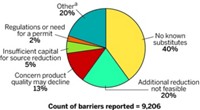Advertisement
Grab your lab coat. Let's get started
Welcome!
Welcome!
Create an account below to get 6 C&EN articles per month, receive newsletters and more - all free.
It seems this is your first time logging in online. Please enter the following information to continue.
As an ACS member you automatically get access to this site. All we need is few more details to create your reading experience.
Not you? Sign in with a different account.
Not you? Sign in with a different account.
ERROR 1
ERROR 1
ERROR 2
ERROR 2
ERROR 2
ERROR 2
ERROR 2
Password and Confirm password must match.
If you have an ACS member number, please enter it here so we can link this account to your membership. (optional)
ERROR 2
ACS values your privacy. By submitting your information, you are gaining access to C&EN and subscribing to our weekly newsletter. We use the information you provide to make your reading experience better, and we will never sell your data to third party members.
Policy
Naming Dangerous Chemical Facilities
Report lists sites where accidents, terrorist attacks could kill millions
by Rochelle Bohaty
November 24, 2008
| A version of this story appeared in
Volume 86, Issue 47
LOOKING AT worst-case scenarios, a new report identifies 101 U.S. chemical manufacturing and water treatment facilities that would cause massive casualties in the event of an accident or terrorist attack. If these facilities used alternative chemicals or processes, however, 110 million lives could be saved, according to the Nov. 19 report by the Center for American Progress, a nonprofit organization.
The report, "Chemical Security 101," names facilities that it classifies as the nation's "most dangerous"—those putting more than 1 million people at risk. The report is based on an analysis of risk management plans that chemical facilities submitted to EPA in October.
The report is unique because it allows direct access to information about potentially hazardous chemical facilities that has been hard to come by in the post-9/11 era. The Department of Homeland Security has a list of chemical facilities possessing certain chemicals that put them at high risk for a terrorist attack. That list, however, is not available to the public.
Chlorine, hydrofluoric acid, and various sulfur-containing chemicals are sources for alarm at 300-plus chemical installations, according to the report. Accidents or terrorist attacks at these facilities pose a toxic gas inhalation risk for people in nearby communities, the report says.
For each listed facility, the report suggests alternative chemicals and processes that would mitigate safety concerns and reduce the risk of a terrorist attack. The report recommends that Congress impel the use of safer technologies by requiring chemical installations to assess feasible alternatives and carry liability insurance.
"We are committed to continuously monitoring, evaluating, and improving potential impacts at all life-cycle stages of our products," says a spokesman at Bayer, which has at least one facility on the list. The complete list is available at www.americanprogress.org/issues/2008/11/pdf/chemical_security.pdf.
DHS points out that the report's list of chemical facilities does not correlate with those covered under the department's antiterrorism program. Amy Kudwa, a spokeswoman for the department, says DHS used different criteria and procedures to identify high-risk facilities.



Join the conversation
Contact the reporter
Submit a Letter to the Editor for publication
Engage with us on Twitter